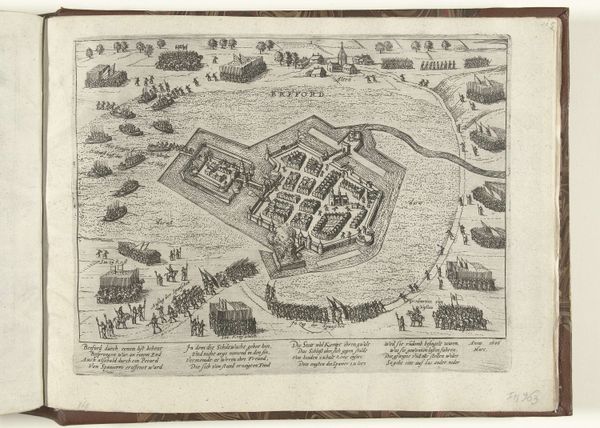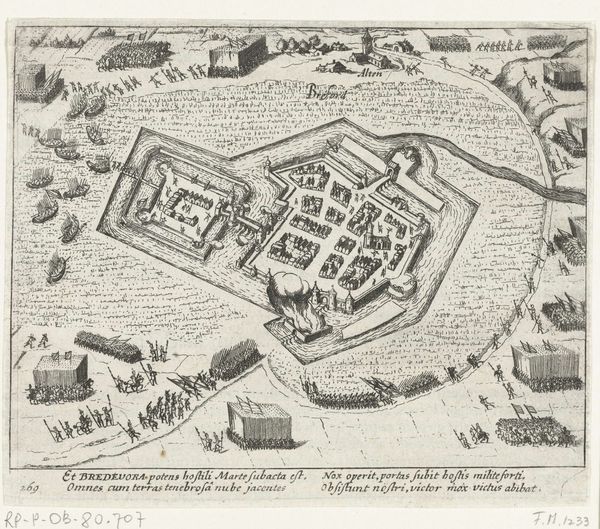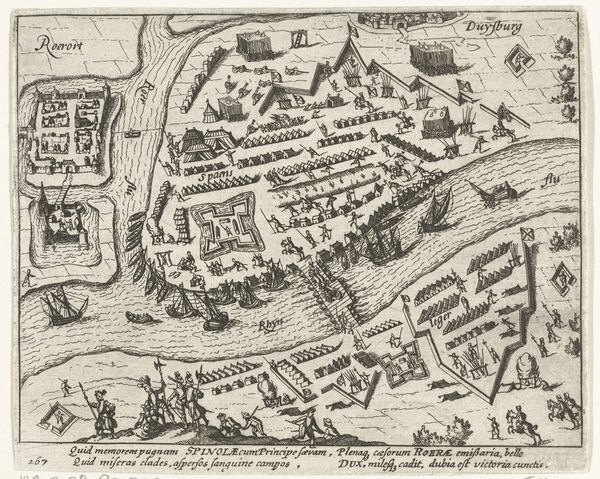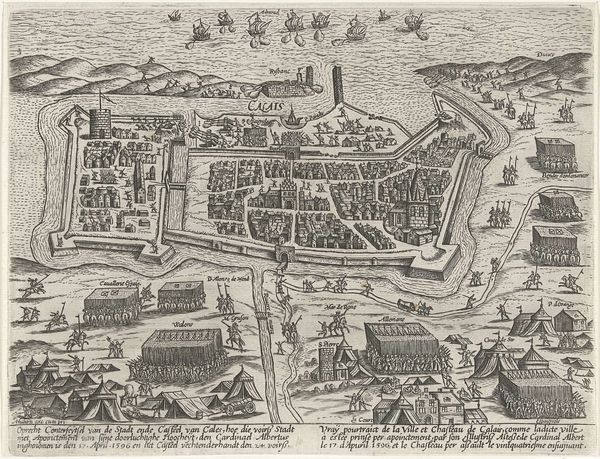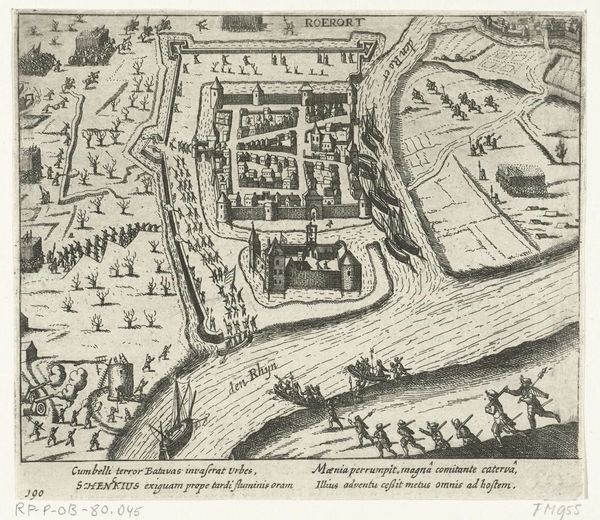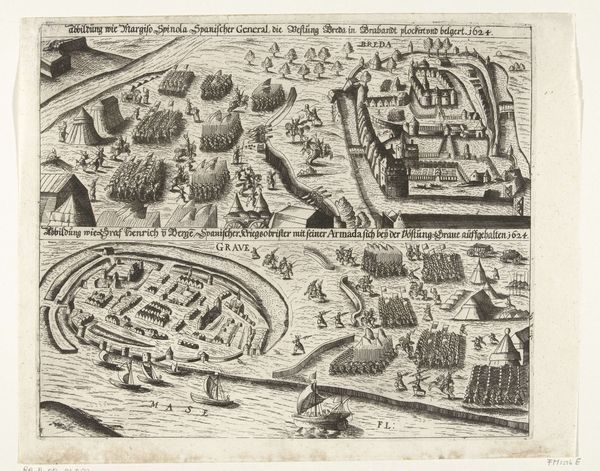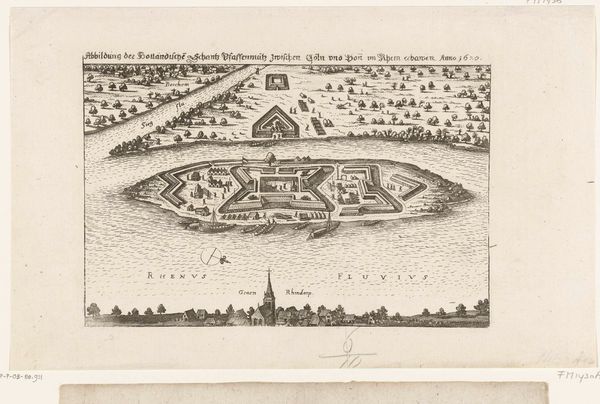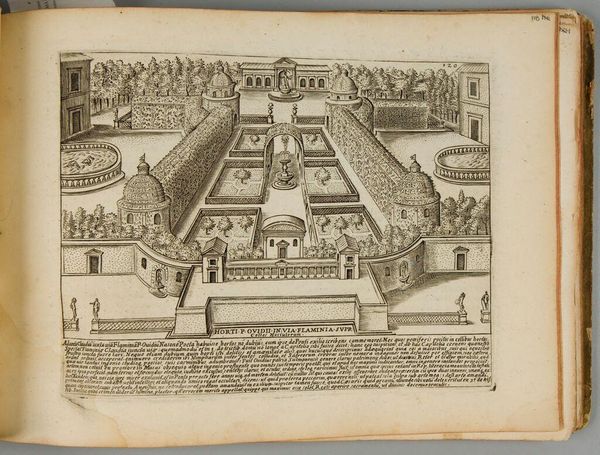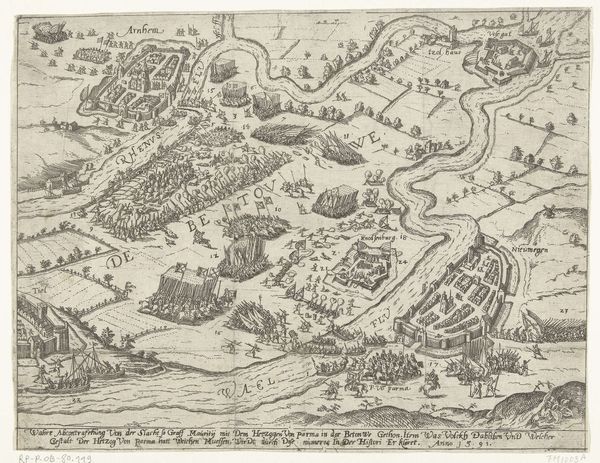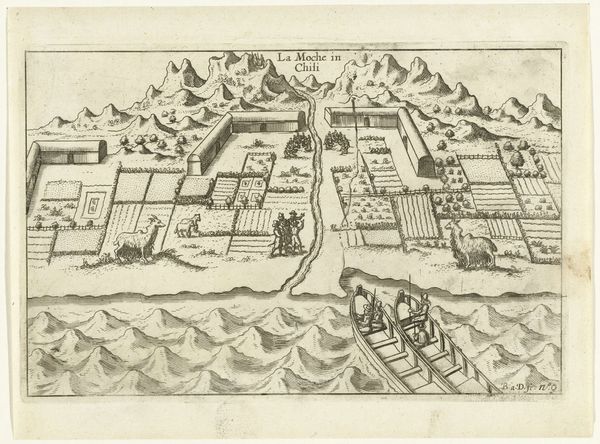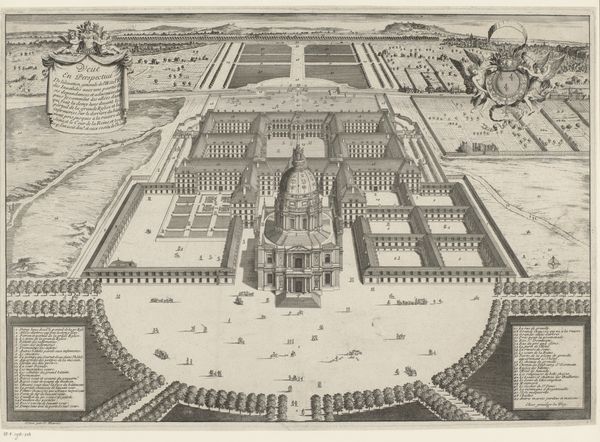
print, engraving
#
pen drawing
# print
#
ink line art
#
cityscape
#
history-painting
#
engraving
Dimensions: height 410 mm, width 707 mm
Copyright: Rijks Museum: Open Domain
Curator: This is an engraving titled "Reconstruction of the Ancient Port of Ostia," dating from 1575 to 1691. The print is by an anonymous artist and held in the Rijksmuseum collection. Editor: It's a very detailed aerial view of what looks like a bustling port city. The architectural precision is striking, but how do we understand its historical importance beyond just a pretty cityscape? Curator: The engraving's materiality speaks volumes. Look at the linear precision achieved with ink on paper – the density of lines indicating form and depth. This wasn't simply about aesthetics; it was about the labor of representing and documenting Roman engineering prowess. Consider how the creation of such an image, its replication and dissemination, impacted understandings of Roman urban planning and material culture at the time of its creation. The consumption of this image acted as a commodity as well. Editor: So you're saying that the process of creating and distributing this print influenced how people understood Roman infrastructure? Curator: Precisely. And think about the choice of depicting a reconstruction. This isn't a snapshot of reality but an active engagement with history. What kind of knowledge production was made possible through the print medium? What kind of work goes into depicting these details with such fine detail and exactness. It isn’t just documentation; it's an interpretation shaped by the engraver's choices and, by extension, the desires and biases of the commissioner and intended audience. This affects material understandings of power. How was control demonstrated with urban landscapes during this period? Editor: That's fascinating. I hadn’t thought about how the medium itself could shape our understanding of the subject matter. Curator: And it invites us to question: what was the social role of this image at the moment of its making? The scale, detail, and material production indicate the wealth required to command an image of this sort. Its symbolic worth, then, speaks volumes. Editor: Thanks, that gives me a whole new perspective on looking at historical prints. I see so many things now! Curator: Wonderful. By understanding the material conditions and historical context, we appreciate the depth of such works.
Comments
No comments
Be the first to comment and join the conversation on the ultimate creative platform.

